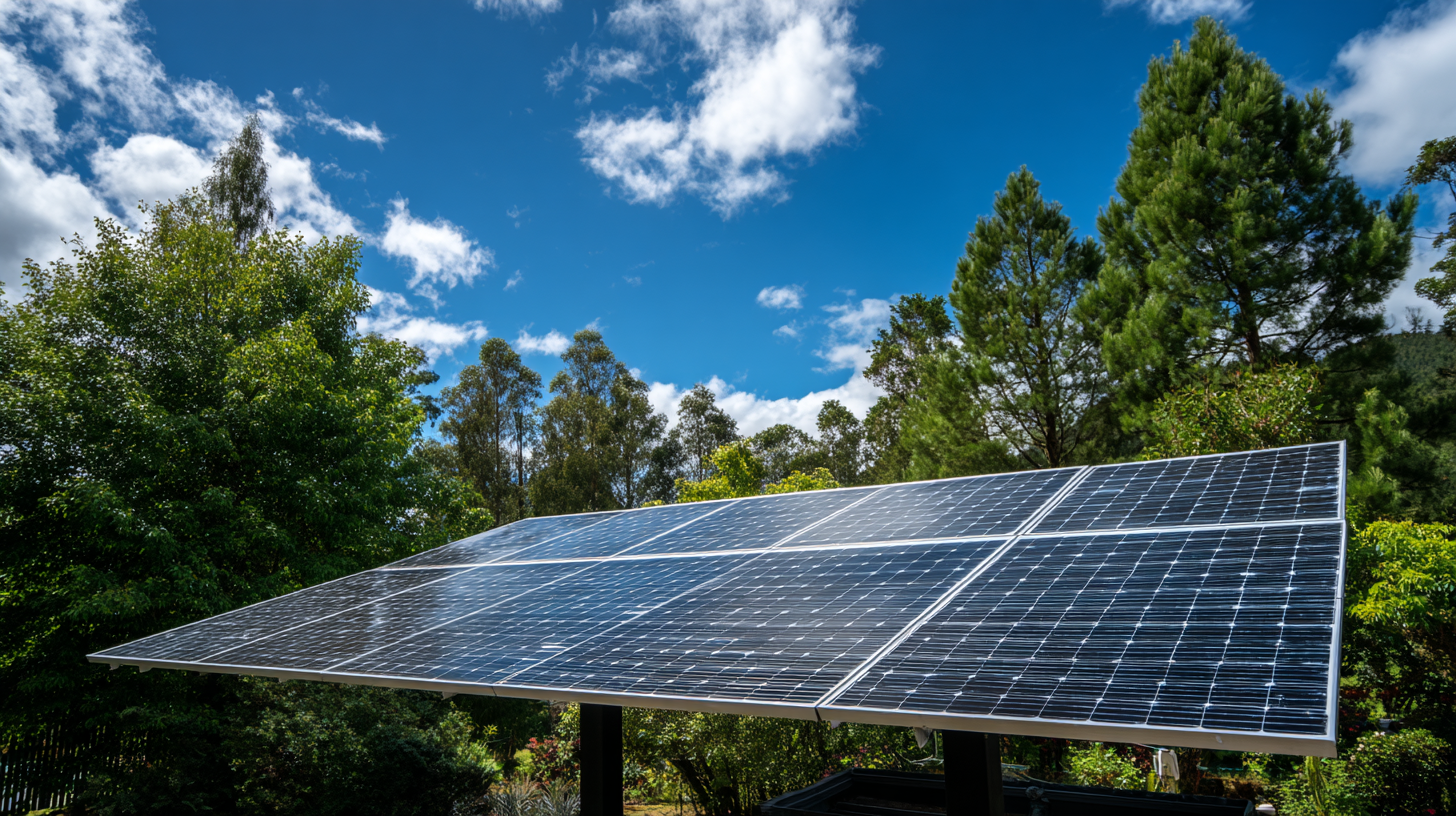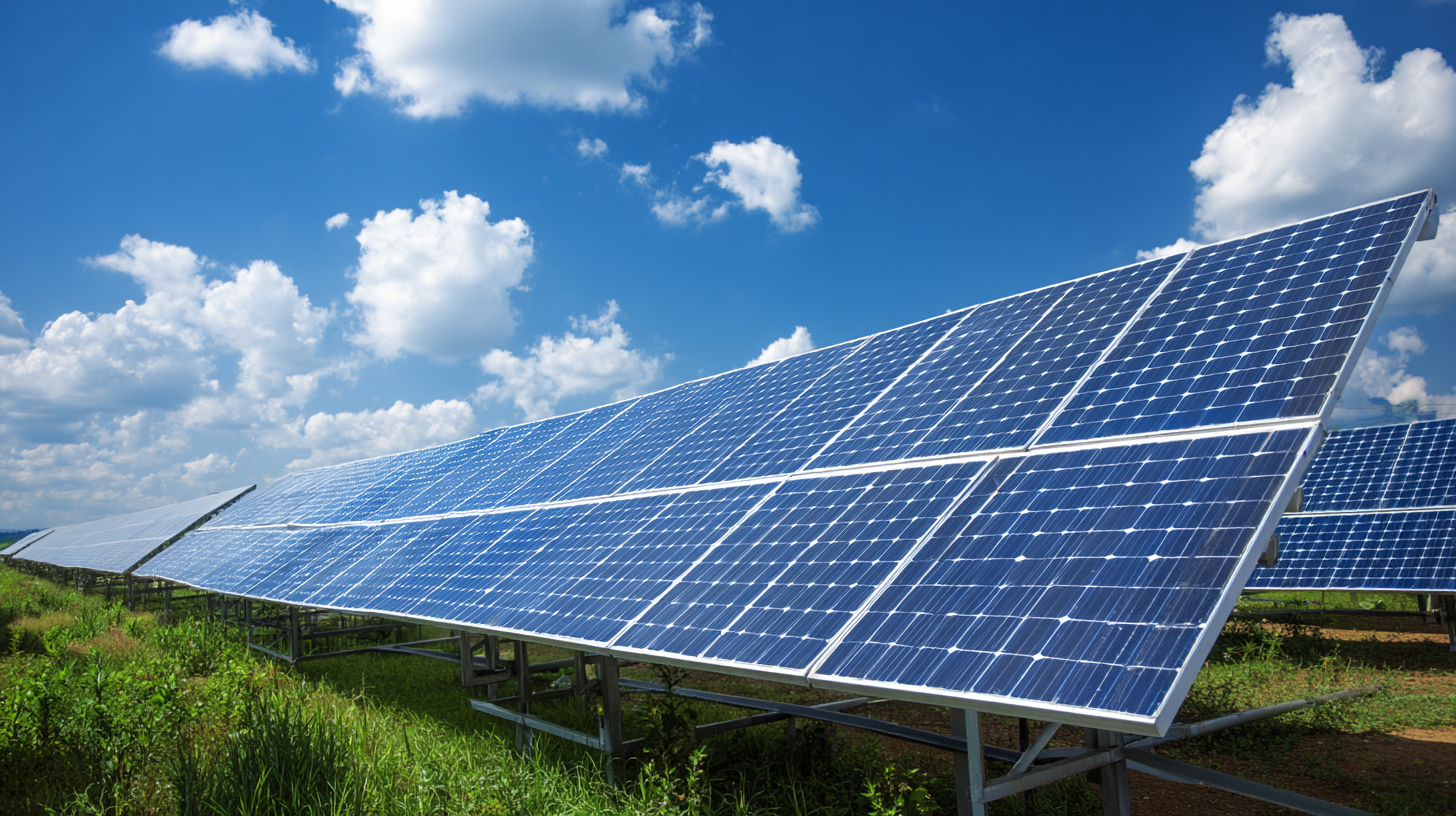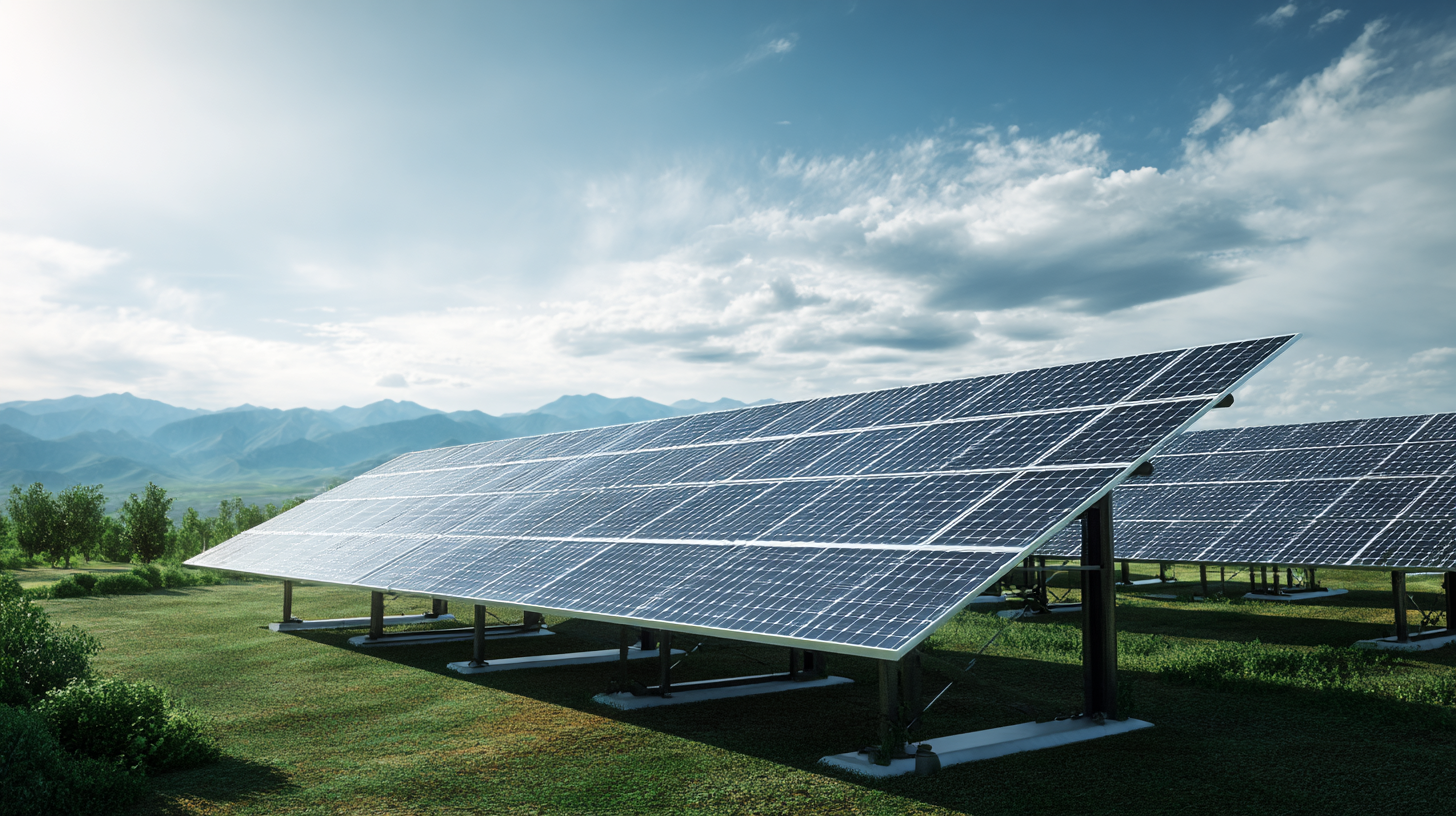7 Best Solar Panels for Maximum Efficiency in 2023
As the world continues to shift towards renewable energy sources, solar panels have emerged as a leading solution for sustainable power. In 2023, the demand for highly efficient solar panels is at an all-time high, as homeowners and businesses alike seek to reduce their carbon footprint and energy bills. This blog explores the top strategies for selecting the best solar panels that maximize efficiency, ensuring you make an informed decision when investing in renewable energy. Whether you're a seasoned solar enthusiast or a newcomer to solar technology, understanding the latest advancements and features of solar panels is crucial in harnessing the full potential of sunlight.

Join us as we delve into the seven best solar panels of 2023, equipped with cutting-edge technology and impressive performance ratings to help you achieve your energy goals effectively.
Top 7 High-Efficiency Solar Panels to Consider in 2023
When considering solar energy solutions in 2023, high-efficiency solar panels stand out as the optimal choice for homeowners seeking to maximize their energy output. These panels convert sunlight into electricity more effectively than traditional models, making them an excellent investment for both environmental sustainability and cost savings. Among the top contenders this year, brands such as SunPower and LG offer panels that boast impressive efficiency ratings, often exceeding 22%. This means that even with limited roof space, homeowners can generate significant power, significantly lowering their electricity bills.
Moreover, the advancements in solar technology have made these high-efficiency panels not only powerful but also aesthetically pleasing. Sleeker designs and modern aesthetics allow them to blend seamlessly with various architectural styles while efficiently gathering sunlight. Additionally, many of these panels come with substantial warranties and reliable performance guarantees, providing peace of mind for users looking to harness renewable energy for the long term. As the industry continues to innovate, investing in high-efficiency solar panels can be a decisive step towards achieving energy independence and contributing to a greener planet.
7 Best Solar Panels for Maximum Efficiency in 2023
| Panel Type | Efficiency (%) | Power Output (W) | Warranty (Years) | Price (USD) |
|---|---|---|---|---|
| Monocrystalline | 22.0 | 400 | 25 | 300 |
| Bifacial | 21.5 | 450 | 30 | 380 |
| Polycrystalline | 19.5 | 350 | 25 | 250 |
| Thin-Film | 17.0 | 200 | 10 | 150 |
| PERC | 22.5 | 420 | 25 | 320 |
| Half-Cut Cell | 21.0 | 400 | 25 | 310 |
| HJT (Heterojunction) | 24.0 | 450 | 25 | 500 |
Key Features to Look for in Efficient Solar Panels
When choosing solar panels for maximum efficiency in 2023, it’s essential to focus on key features that contribute to performance and long-term sustainability. First, consider the type of solar cells used. Advanced technologies like perovskite solar cells are emerging as game-changers, capable of producing energy more efficiently than traditional silicon cells. These innovative panels can provide a significant increase in energy output, making them an attractive option for homeowners and businesses alike.
Another critical feature is energy management capabilities. Utilizing energy management software can optimize the efficiency of your solar energy system. Recent studies show that software that integrates hybrid machine learning models can enhance PV output prediction, leading to better energy management strategies. This kind of technology ensures that users can manage their energy consumption effectively, adapting to fluctuations in solar energy availability.
**Tips:** When evaluating solar panels, look for models with high efficiency ratings—ideally over 20%, which is considered top-tier. Additionally, prioritize panels from manufacturers that offer robust warranties of 25 years or more to safeguard your investment. Finally, consider the installation options available; vertical solar arrays, for example, are a developing trend that maximizes space utilization while maintaining aesthetics.

Comparing Solar Panel Technologies for Optimal Performance
As we move towards a more sustainable future, understanding the varying solar panel technologies is crucial for maximizing efficiency. Current advancements in solar technology have led to significant improvements in the performance of photovoltaic (PV) systems. According to the National Renewable Energy Laboratory (NREL), the conversion efficiency of monocrystalline solar panels can reach up to 22%, making them the most efficient option on the market today. This high efficiency is achieved due to their superior design and the quality of silicon used, enabling them to perform better in low-light conditions compared to polycrystalline alternatives.
Furthermore, bifacial solar panels are gaining traction as they can harness sunlight from both sides, potentially increasing energy generation by 10-20% depending on installation conditions. Recent data from SolarPower Europe indicates that these panels have become increasingly popular, contributing to a notable shift in consumer preferences. As solar technology continues to evolve, understanding these different panel types and their respective efficiencies is essential for homeowners and businesses aiming to optimize their solar investments. With the right choice, users can significantly enhance their energy output and overall sustainability goals.
7 Best Solar Panels for Maximum Efficiency in 2023
Maximizing Energy Production: Tips for Solar Panel Installation
When it comes to solar panel installation, maximizing energy production is key to reaping the full benefits of your investment. One of the most critical factors to consider is the placement of the panels. Ideally, solar panels should be positioned to receive direct sunlight for the longest part of the day. This often means placing them on a south-facing roof with minimal shading from trees or nearby buildings. Conducting a thorough site assessment before installation can significantly enhance the efficiency of your solar setup.
Additionally, choosing the right tilt angle can also optimize energy production. In most cases, the angle should correspond to your geographical latitude, allowing panels to capture sunlight more effectively throughout the year. Furthermore, ensuring that the panels are clean and free from debris can lead to better performance. Regular maintenance checks, especially after storms or heavy winds, can prevent dust accumulation and improve the overall output. By focusing on these crucial installation tips, homeowners can maximize their solar energy production and enjoy substantial savings on their energy bills.
Understanding Cost vs. Efficiency: Getting the Best Value in 2023
When considering the best solar panels for maximum efficiency in 2023, it’s crucial to understand the balance between cost and performance. Investing in high-efficiency solar panels typically leads to better energy production, which can offset initial costs in the long run. However, it’s important to analyze your specific energy needs and the local climate conditions, as these factors directly influence the performance of solar panels.
To ensure you get the best value, shop around and compare different brands and models. Look for panels with high efficiency ratings, typically 20% or above, which means they convert a greater percentage of sunlight into electricity. Additionally, consider the warranty and lifespan of the solar panels, as a longer warranty often indicates better durability and performance over time.
Additionally, utilizing incentives and rebates can significantly reduce your overall costs. Research any available government programs or utility incentives in your area. These can make high-efficiency solar panels more affordable, allowing you to maximize your return on investment while adopting clean energy solutions. Remember, the goal is to find a balance that fits your financial situation while also optimizing energy output.
